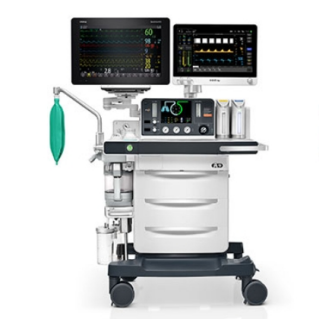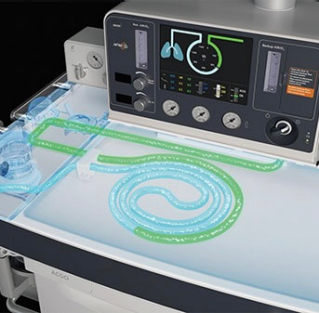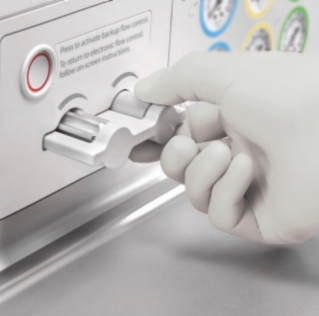An anesthesia machine is an integral part of a surgical facility. Over the past few years, manufacturers have implemented several new features to anesthesia machines that make them more accessible, further efficient, and safer than ever before.
If you are looking to update old equipment or equip a new healthcare clinic – the array of available options can make it challenging to identify the suitable machine for your facility. This article outlines some essential features that any quality machine should possess and will help you determine whether to buy or lease your equipment.
Choose your Ventilator
Two examples of ventilation systems currently used in anesthesia machines are the double-circuit bellows ventilator or a single circuit piston ventilator.
The piston ventilator uses a computer-controlled motor to deliver gas into the breathing system – a single circuit. It does not use driving gas. It works by using gas compression to force air into the patient’s lungs. The motor compresses the gas within the piston, raising the pressure within it, which causes gas to flow into the lungs.
Bellows ventilators use a double circuit. During inspiration, the double-circuit machine uses pressurized gas to drive and compress a bellow, delivering ventilation to the patient. The term “double-circuit” applies to bellows ventilators because, during expiration, the bellows re-expand as the breathing system gas flows in. The driving gas is vented through the exhaust valve and into the atmosphere. Hence, the term “double-circuit".

Safety First
In anesthesia machines, the safety features are the most essential. Some non-negotiable safety features you will need for your device include:
- Backup oxygen or nitrous cylinders
- Oxygen sensors, to inform when supplies are becoming depleted
- Minimum of two vaporizer ports for varying needs of anesthetic agent for different patient types
Most modern anesthesia machines contain these features and more; however, it is worth checking to ensure that the machine you are about to purchase provides as high a level of safety as possible for your patients.
Size and Mobility
Every healthcare setting is different – including the physical space in which they operate. The anesthesia machine you will want to purchase for your medical facility might vary based on the size of the operating room, as well as how often you will need to move it from place to place.
If the facility is spacious and you intend on using the machine in a fixed location, size and mobility are irrelevant. However, many medical settings find space at a premium. In these cases, it is essential to opt for a smaller and more mobile machine to have sufficient clearance around the machine for proper ventilation and ease of movement to attend to your practice’s varied needs.
The Question of Storage
Along those lines, you will want to consider the question of storage when purchasing an anesthesia machine. The machine you buy should have sufficient storage to hold the monitors, tubing, and stylets needed to operate your pneumatic device. If you move the machine room to room, your anesthesia machine must have a built-in suction system or a place to attach a suction regulator. Ensuring that your machine’s equipment is stored correctly will help your anesthesia operator to work more efficiently and your facility to run smoothly.

Return on Investment
Anesthesia machines are a significant investment, so there are a few logistical factors you will need to consider when making your purchase.
Should you choose a new machine with the latest technology or a refurbished machine that is more cost-effective? While older equipment may be more financially accessible, it is also likely to become obsolete more quickly, meaning you will have to replace it sooner than if you bought a new machine. Calculate the potential return on investment by estimating the number of years you will use the device before you need to purchase a new one.
If you prefer to purchase new, but your budget does not allow it, you might consider financing options. Loans for medical equipment typically require 20% down, which helps alleviate the financial burden of a large purchase. Opting for newer equipment allows you to provide a better patient experience – both operationally and safety-wise – and thus is worth the greater expenditure.
There is also a third option: leasing an anesthesia machine. Leasing an anesthesia machine can be ideal for smaller practices without an outright purchase budget. With fixed monthly payments, you will have a machine to use without worrying about any maintenance costs or fees. When your equipment needs an upgrade, most leasing companies allow you to trade in your old device for a newer model, so you do not have to worry about missing out on the latest technology or being burdened with selling obsolete equipment.
The Best for Your Facility
When you are looking to purchase an anesthesia machine for your medical facility, the investment you make in your equipment should improve your patients’ quality of care. After all, to the best medical facilities a patient’s care is the most crucial consideration. As a trusted medical professional, we know that your goal is to ensure the superior quality of the equipment you purchase to treat the patients who chose your facility.
Your patient’s quality of care matters to us as well; that is why at Mindray North America, we dedicate ourselves to providing you with expert advice on the best anesthesia machines for your medical facility. Contact us today and speak directly with one of our team members to help guide you through our anesthesia machine solutions and determine which model and purchase plan work best based on your needs.
References
https://www.ncbi.nlm.nih.gov/pmc/articles/PMC3821270/
https://healthprofessions.udmercy.edu/academics/na/agm/08.htm
https://medcraveonline.com/JACCOA/safety-features-in-modern-anaesthetic-machines-an-update.html
https://www.apsf.org/article/features-of-modern-anesthesia-machines/
https://www.jucm.com/lease-buy-medical-equipment-whats-best-practice/
https://doctorsbusinessnetwork.com/leasing-medical-equipment-vs-buying/



